The Life Of The Colours

We visited Hobson & Sons, a specialist producer of military Colours, to see first-hand the expert skills required to create these timeless objects.
Once a Regimental Colour design is received by Hobson’s, it is enlarged by being hand-drawn onto silk.

A stencil of the entire design is pinpricked by hand. This is very tiring on the eyes and can take up to a week, depending on the level of detail.

The stencil is inked onto the silk below. This creates a print of the design.

The design is then stitched by hand onto the front and back of the silk. The technique used means that an identical design is simultaneously stitched onto the front and back of the Colour. This skill can take years to learn.

After around 6 months of work, the Colour is given to the regiment. Colours are generally used for 10-25 years and are occasionally returned for repairs.
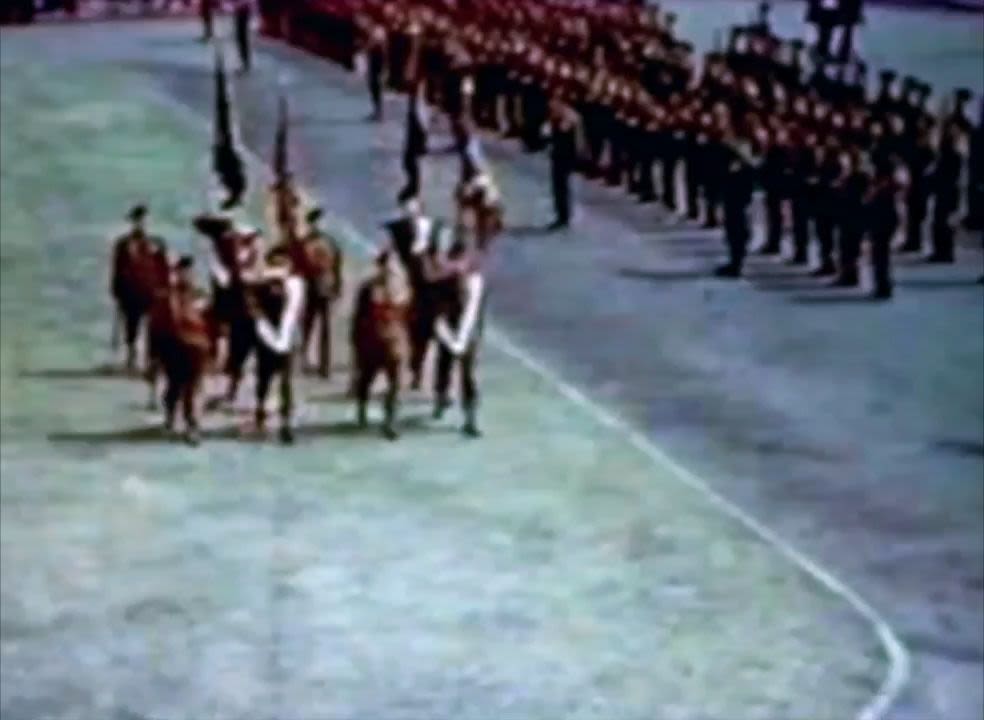
Hobson & Sons have produced military Colours since 1850 and still use many of the same skills today. The company produced Colours for the DLI when it was still an active regiment.
In this video, Aileen from Hobson’s embroidery department talks through the history of the company, the process of creating the Colours and why their work is so important.
We’ve been to many parades over the years; it’s an honour to be invited… We have pride in what we do, we know the significance and the pride it gives to the regiment. They are honoured to carry their history.
Aileen, Hobson & Sons
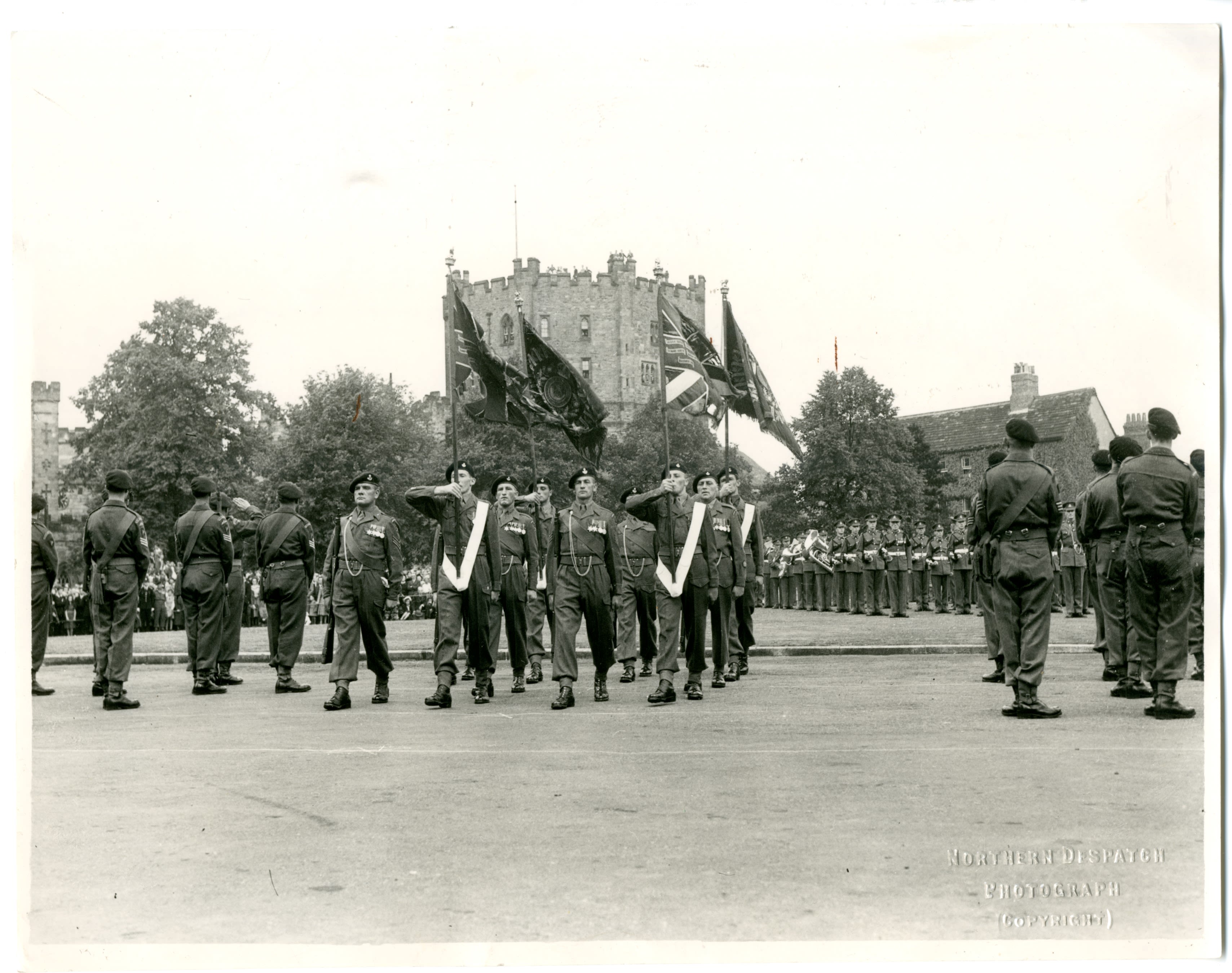
Whilst little has changed in the Colour making process, looking closely at the earlier Colours in the DLI Collection reveals some interesting differences.
The Regimental Colour of the South Shields Loyal Volunteers features a painted wreath, emblem and scroll. Hand painted Colours were more likely to be damaged so regiments began to use longer-lasting, embroidered Colours in the 1800s.
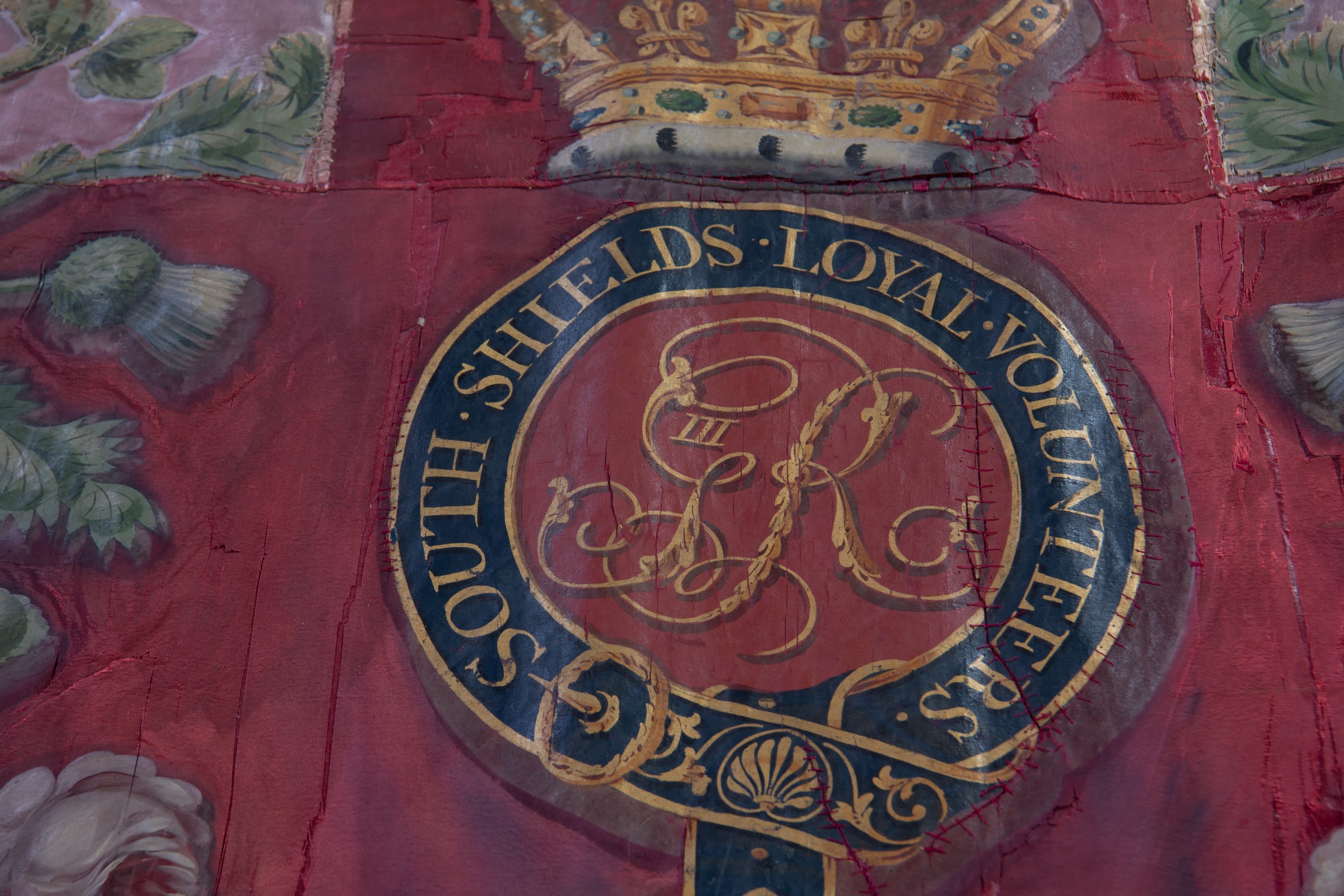
Changes may have been made to the Colours over time to keep them up to date. The King’s Colour of the South Shields Loyal Volunteers, originally produced in 1798, has the cross of St. Patrick on the Union Flag. This cross can only have been added to the Colour after the Act of the Union which was four years later, in 1801.
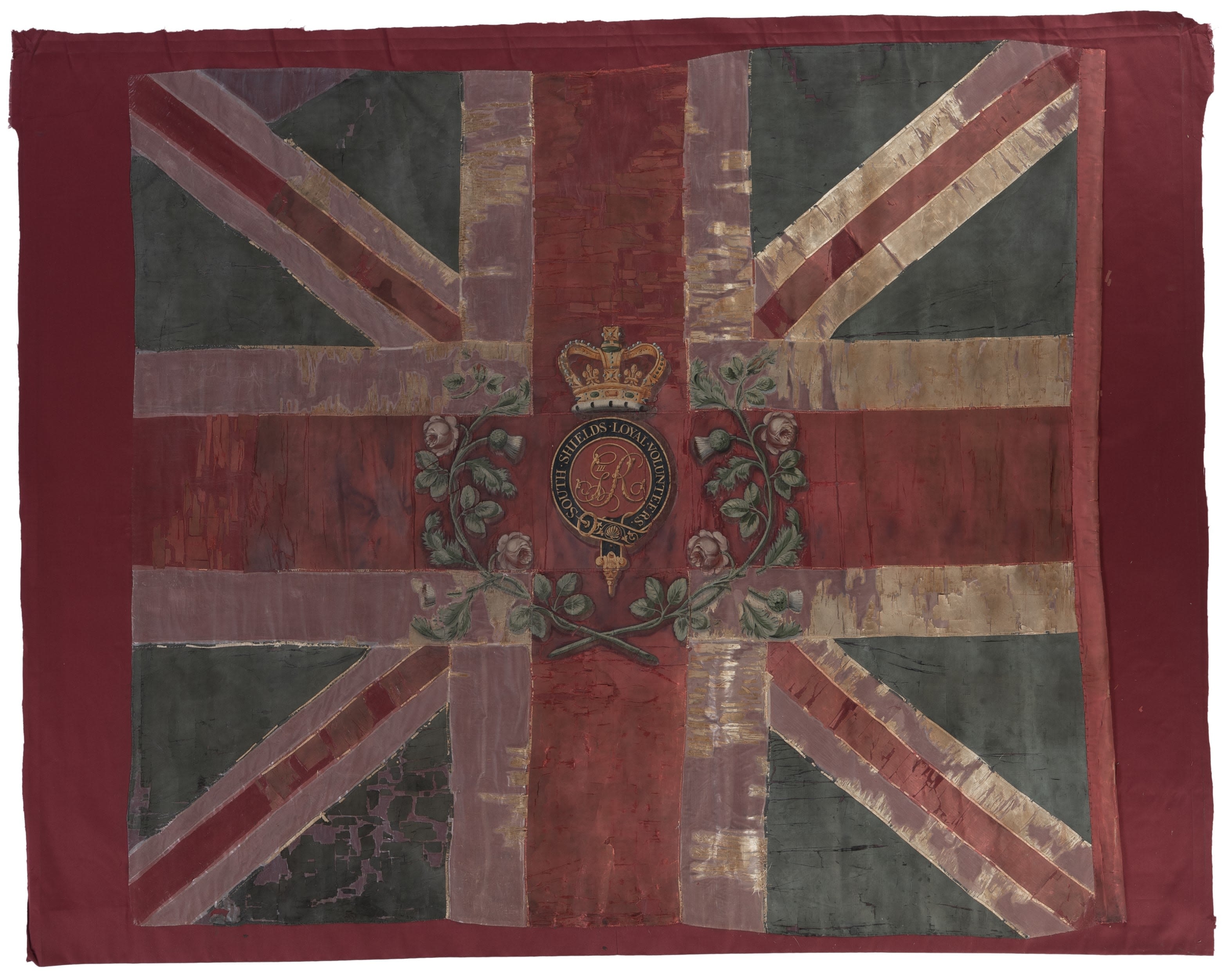


The life of the Colours of the 9th Battalion DLI tells us about the history of the Battalion and the use of military Colours.
The Colours of 9 DLI were blessed and presented to the Battalion by King Edward VII in a ceremony at Windsor in June 1909.
The battle honours on the King’s Colour were added after the end of the First World War.
The Colours were used in the Guard of Honour for King George V in 1928 and again for King George VI in 1939.
The Battalion fought in France, then Belgium after the outbreak of the Second World War and was also involved in the Dunkirk evacuations of 1940.
9 DLI landed on the Normandy beaches on D-day in 1944, fighting across France and then Germany until the end of the war.
The Colours arrived from the DLI Depot at Brancepeth Castle, County Durham, and the Battalion marched them into Berlin in July 1945.
In this interview clip, Private John Dobbs of 9 DLI describes escorting the Colours after their arrival in Germany.
Audio ©Imperial War Museum (27302 Dobbs, John (Reel 9))
Audio ©Imperial War Museum (27302 Dobbs, John (Reel 9))
On 5 November 1949, the Colours were laid up in St. Mary’s Parish Church, Gateshead as part of an Inkerman Day service honouring an important DLI battle.
They remained on display until they were damaged in a fire at the church in 1979.
Following the fire damage, the Colours were loaned to the DLI Museum and underwent conservation work in the 1980s before they were officially transferred into the DLI Collection in 2016.
They had come to place their colours in the grand old Cathedral, which they deemed to be a fitting resting place after they had wandered so far and so wide. Durham City was very proud of the Durham Light Infantry.
Local press report of the laying-up of the Colours, 1912
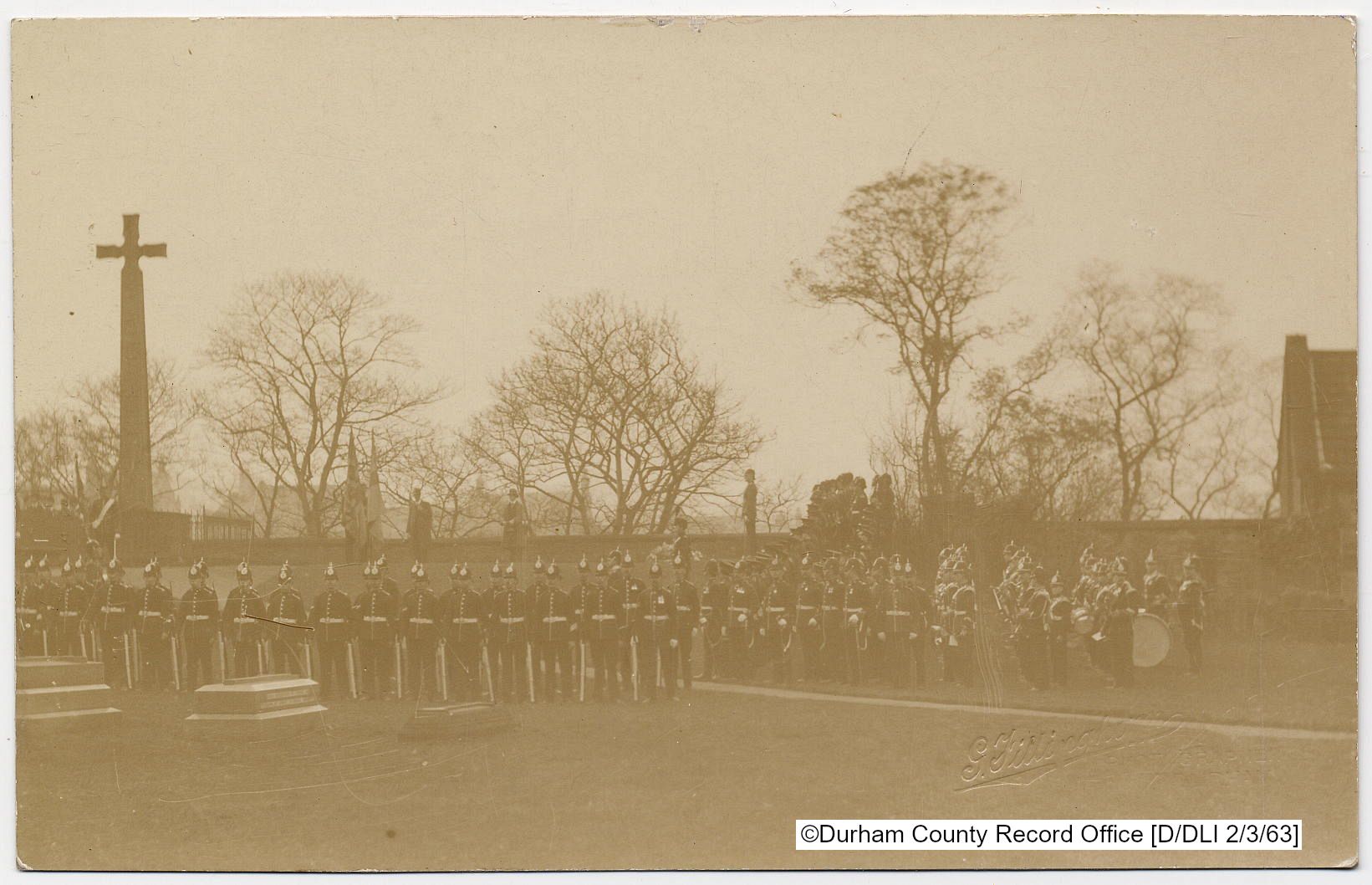
When a new set of Colours is presented to a regiment, the previous set is retired. There are several reasons for this, including condition, the awarding of new battle honours or celebrating the start of a new era for the regiment.
The retirement of the Colours is often observed with a laying-up ceremony. These occasions mark the legacy of the battalion and honour those who lost their lives in service to the regiment.
This extract from the DLI Regimental Review of 1923 describes a laying-up ceremony at Durham Cathedral.
This extract from the DLI Regimental Review of 1923 describes a laying-up ceremony at Durham Cathedral.
Many of the DLI Colours have been laid-up in the DLI Chapel in Durham Cathedral where they can still be seen today. Following the huge losses suffered by the Regiment in the First World War, the DLI Chapel opened in 1923. The Chapel is a quiet place for contemplation and houses the Books of Remembrance for the Regiment.
The final laying-up ceremony for the Colours of the DLI took place on 12 December 1968 at Durham Cathedral. All those present were asked to stand as the Colours passed by, with men in civilian dress required to remove their hats and all those in uniform to salute.
The regimental hymn, Abide With Me, was sung at the end of the service.
Click to listen to Abide With Me, regimental hymn of the DLI, performed by The Oxford Trinity Choir


Unless otherwise stated, all photographs reproduced with the permission of the Trustees of the Former Durham Light Infantry Regiment and the DLI Collection.
Unless otherwise stated, all photographs reproduced with the permission of the Trustees of the Former Durham Light Infantry Regiment and the DLI Collection.

